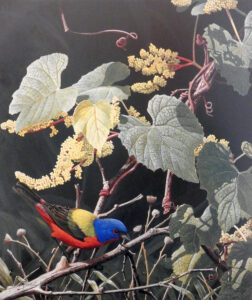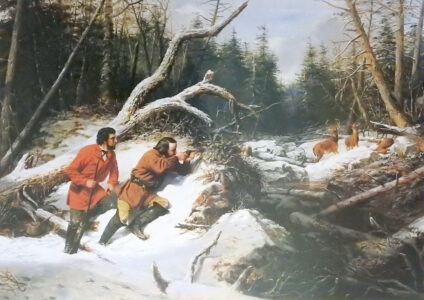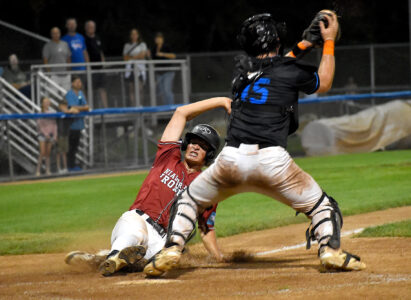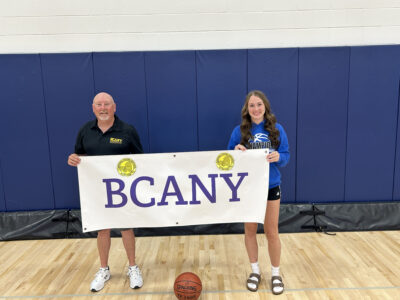Wildlife Arts And Artists
- “Painted Jewel” by Stephen Koury, 2000.
- “Still Hunting on the First Snow: A Second Shot” by A. F. Tait, 1855.
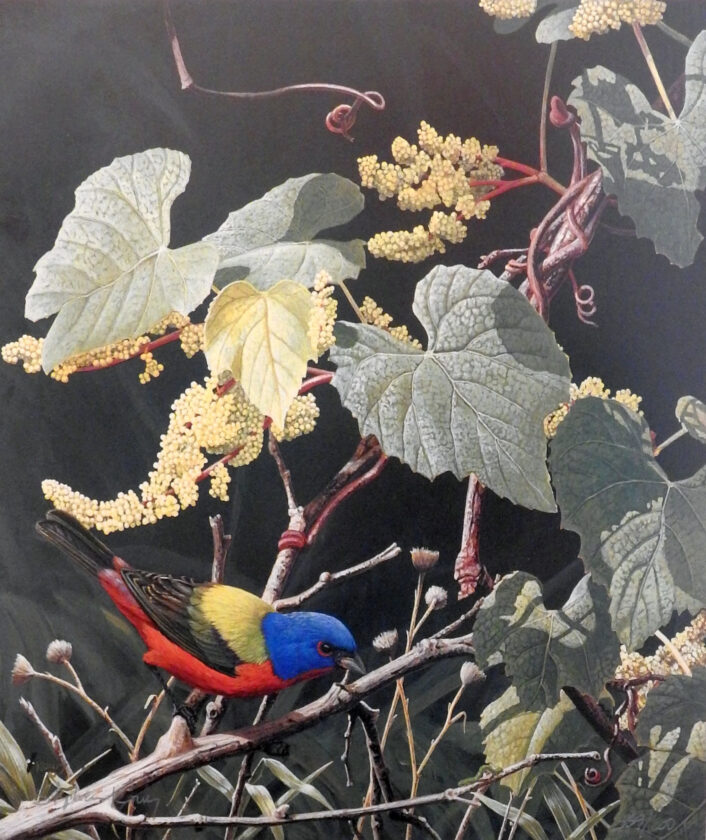
“Painted Jewel” by Stephen Koury, 2000.
My opinion (and this is probably one of my correct opinions) is that some of the best artists in the world are wildlife artists. And among wildlife artists, some of the best have come from Pennsylvania and New York.
Why do I say I’m probably right? Because wildlife art has deep and strong roots in our area. Did you know John James Audubon was a Pennsylvania artist? Lesser known, but an artist Audubon mentored, was New York’s Louis Agassiz Fuertes. These men were pioneers in the field of wildlife art. Everyone knows Audubon, and everyone has seen the work of Fuertes, whether they know his name or not. They were naturalists and conservationists of the first order.
Due to the difficulty of depicting birds and animals in their natural habitat, early wildlife artists often killed animals (Fuertes says he used a sling shot on birds) in order that they could use them as models in the studio. Gravity distorts the body of a lifeless creature — one reason posture and body shape sometimes do not look real. Wildlife artists today can’t succeed without being naturalists, and realism in art has come a long way since Audubon and Fuertes.
The best artists are skilled at depicting wildlife in its natural habitat whether it’s an action scene of white-tailed deer at a licking branch or a turtle in a bog. A paint brush can create almost photographic realism. A tree must be representative of a real species. Tree bark and leaf must match the tree species. A log isn’t just a log; it’s in some stage of decay. Look closely and you might see a songbird, some sign of weather, or an inchworm crawling on a twig.
Audubon, the father of American wildlife art, was only the first of many Pennsylvania artists to produce extraordinary artwork. The twentieth century produced many more, including the incomparable Ned Smith who painted more than 1,000 illustrations, 120 of which were featured on the covers of Pennsylvania Game News.
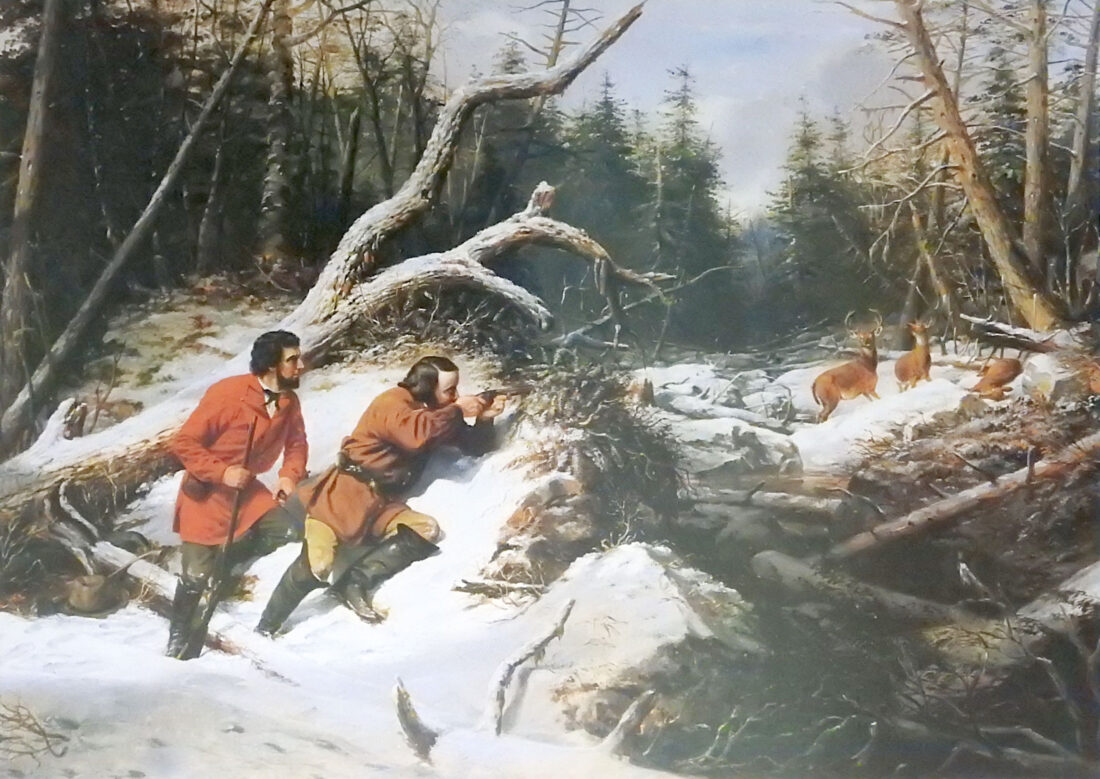
“Still Hunting on the First Snow: A Second Shot” by A. F. Tait, 1855.
Smith inspired countless others, some amateurs and some professionals, from the mid-twentieth century on. Gerald Putt (Boiling Springs, Pennsylvania) has won countless awards including several duckstamp competitions. The way he depicts light makes his paintings distinctive. Jack Paluh (Waterford, Pennsylvania) specializes in “Plein Air painting” (in the open air), Native American and other heritage themes, and landscapes that cause the viewer to feel as if he has visited the place.
Michael Kensinger (Altoona, Pennsylvania) is one to watch. He is rising rapidly and soaking up lessons and insights everywhere he finds them. His work shows quality and detail that cannot be overlooked. Expect him to win a conservation stamp before long. These and others have made careers as serious wildlife artists and are important conservationists for the way they bring the natural world into our homes.
My walls don’t display all I’d like to have, but with a bit more space than I once had, I’m hoping to add more. I need to get a Ned Smith painting. My most recent addition, acquired from my friend Jon Swart, associate pastor of Warren’s First Methodist Church, is a scene I can easily insert myself into. It’s a print of an 1855 painting by Arthur Fitzwilliam Tait called “Still Hunting on the First Snow: A Second Shot.” It portrays the artist and his friend Matthew Brady (who would become the famed Civil War photographer) hunting whitetail deer.
Another favorite is “Farmers Valley 1830” by Ernest Durphy. I discovered Durphy, now a good friend, while researching an article on the 1830 Arthur Young buck from McKean County, Pennsylvania. No animal is documented in any record book anywhere in the world with a date earlier than Young’s enormous whitetail, and Durphy’s representation of the buck is truly awesome.
Nothing does a better job of transporting us into the wild than the painstaking and thoughtful work of a serious wildlife artist, whether he shows us a hunting scene or a painted bunting in grapevines. The outdoor world is truly fascinating, and wildlife artists help us appreciate it in ways no one else can.
ııı
When “The Everyday Hunter” isn’t hunting, he’s thinking about hunting, talking about hunting, dreaming about hunting, writing about hunting, or wishing he were hunting. If you want to tell Steve exactly where your favorite hunting spot is, contact him through his website, www.EverydayHunter.com. He writes for top outdoor magazines, and won the 2015, 2018 and 2023 national “Pinnacle Award” for outdoor writing.

